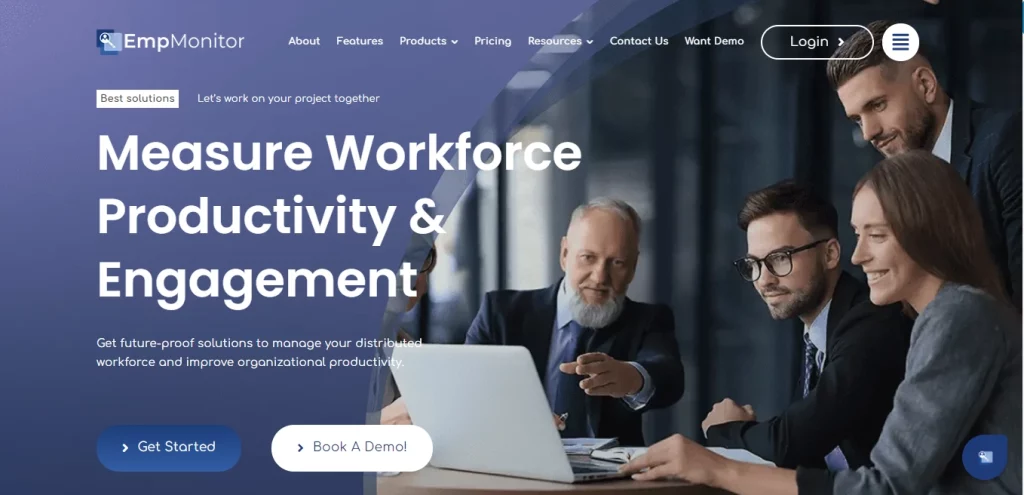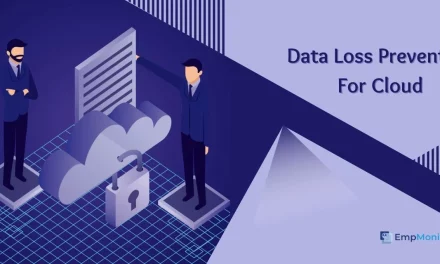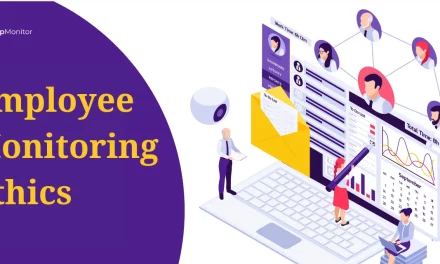The lines between professional commitment and personal ambition are increasingly blurred in a dynamic workforce. Many individuals seek additional avenues to pursue their passions, supplement income, or gain diverse experiences alongside their primary employment. This phenomenon, known as work moonlighting, offers opportunities and challenges that resonate deeply in the modern workplace.
Moonlighting involves working a secondary job or engaging in freelance work outside of regular employment hours. While it can provide financial stability, skill diversification, and entrepreneurial growth, it also raises questions about loyalty, time management, and the ethical boundaries set by employers.
In this blog, we delve into the intricacies of work moonlighting, from understanding its benefits and pitfalls to navigating company policies and legal considerations.
Join us!
IN A HURRY? LISTEN TO THE BLOG INSTEAD!
5 Reasons Why Employees Engage In Moonlighting Activities
Here are several common reasons why employees engage in moonlighting activities:
Additional Income:
Many employees take on extra jobs to supplement their primary income. Increasing living expenses, mounting debts, or unexpected financial obligations can create pressures that drive individuals to seek additional sources of income through work moonlighting.
Career Progression:
Employees may dedicate extra hours to pursue career advancement and skill development. If their current job lacks growth opportunities or fails to align with their career ambitions, they may seek alternative jobs or projects to expand their professional horizons.
Pursuit Of Personal:
Passions work Moonlighting allows employees to pursue personal interests or passion projects that may not be feasible within their regular occupation. Starting a side business, engaging in artistic endeavors, or volunteering enables individuals to pursue their passions beyond their primary job.
Flexibility And Independence:
Some workers value flexible work arrangements in their work schedules and seek autonomy in their professional pursuits. Moonlighting in freelance or gig economy roles allows them to choose their projects, set their hours, and work on tasks that align with their lifestyle and interests.
Job Dissatisfaction:
Employees dissatisfied with their current job role, responsibilities, or workplace culture may seek alternative avenues to find job satisfaction through moonlighting. Exploring different roles or industries can help individuals discover greater fulfillment and satisfaction in their professional lives compared to their primary jobs.
Engaging in moonlighting activities often stems from a blend of personal and professional motivations. Whether driven by financial needs, a desire for growth, or the pursuit of passions, these activities can provide a sense of fulfillment and autonomy that may not be fully realized in one’s primary job.
Workforce management tools like EmpMonitor can help employers gain insights into employee productivity and identify potential signs of moonlighting, ensuring a balanced approach to managing workforce dynamics. By exploring opportunities beyond their regular roles, employees can find new ways to achieve their goals and enrich their professional lives.
How Employers Can Handle Work Moonlighting
Employers are becoming increasingly concerned about employees engaging in moonlighting, especially as freelancing becomes more common, particularly with the option to work from home. To effectively manage moonlighting, employers can take the following steps:
- Implement an agreement prohibiting employees from working for competitors or starting competing businesses. Including a non-compete clause in the employment contract ensures business confidentiality is maintained.
- Ensure there is no conflict of interest by prohibiting employees from engaging in secondary jobs that conflict with the objectives of their primary employment.
- Consider adjusting salaries to meet employees’ financial needs, reducing the necessity for them to seek additional employment.
- Maintain separation between the primary and secondary jobs, ensuring that activities from one job do not interfere with the other, and resources from the primary job are not used for the secondary job.
- Require employees to seek approval before taking on a second job or starting a business, alleviating concerns about undisclosed activities.
Different Types Of Worker Moonlighting
Here are different types of work moonlighting based on how employees balance multiple jobs:
- Blue Moonlighting: Some people take on a second job but find it challenging to manage alongside their primary job. It leads to decreased productivity and performance in both positions, resulting in an unsuccessful attempt at dual employment.
- Quarter Moonlighting: Employees engage in part-time work for 2-4 hours after their regular job hours without compromising their productivity in their primary job.
- Half Moonlighting: When employees spend more than half of their available time on their secondary job to earn extra income. This can lead to reduced commitment and dedication to their primary job.
- Full Moonlighting: Employees successfully manage both jobs without significant issues. Some may even start their side businesses or startups while working part-time or full-time elsewhere.
Pros And Cons Of Moonlighting For Employees
Here are the pros and cons of moonlighting for employees:
Pros Of Work Moonlighting:
- Additional Income: Moonlighting provides extra earnings beyond the regular salary, which can improve financial stability, pay off debts, save for future goals, or enhance lifestyle.
- Skill Development: Employees can acquire or improve skills through moonlighting, making them more effective in their current or future careers.
- Networking Opportunities: Moonlighting lets people build new professional networks and connections, which could lead to future job opportunities or partnerships.
- Exploration Of Interests: It enables employees to pursue personal passions or entrepreneurial endeavors outside their main job, fostering creativity and alternative career exploration.
- Increased Job Satisfaction: Some find satisfaction in moonlighting activities that their primary job may not offer, combating boredom or dissatisfaction.
Cons Of Work Moonlighting:
- Time Constraints: Balancing multiple jobs can consume significant time, reducing availability for personal and family commitments and leading to burnout and stress.
- Potential Conflicts Of Interest: Moonlighting in a related industry or competitive role may conflict with the interests of the primary employer, potentially leading to legal or ethical issues.
- Decreased Focus And Productivity: Splitting focus between jobs can diminish productivity and effectiveness in both roles, exacerbated by fatigue and inadequate rest.
- Risk Of Losing Primary Job: Employers may view moonlighting as a breach of company policies or a conflict of interest, risking disciplinary action or termination from the primary job.
- Health Concerns: Extended working hours and increased responsibilities can impact physical and mental health, affecting overall well-being.
- Lack Of Work-Life Balance: Moonlighting can upset the balance between work and personal life, reducing time for leisure, social activities, and self-care.
So, moonlighting can negatively impact your business.
Is it against the law?
Moonlighting policies vary by company; there’s no specific law against it.
For instance:
IT sectors such as Wipro, Tata Consulting Services, and IBM India enforce strict policies against moonlighting.
In contrast, companies like Swiggy and Tech Mahindra permit secondary employment with prior approval provided it does not conflict with primary job responsibilities.
Therefore, if your company’s employment contract or handbook explicitly prohibits moonlighting, you should take appropriate action to address it.
Let’s explore the different ways in which you can deal with work moonlighting.
Top 5 Ways To Deal With Work Moonlighting
Dealing with employees’ moonlighting involves careful consideration and a balanced approach. Here are steps to effectively handle the situation without immediately resorting to termination:
Open Communication About Moonlighting
It’s crucial to maintain open communication with employees regarding work moonlighting practices. Employees should understand that while trust is valued- within the company, unauthorized moonlighting can have serious consequences. Before any issues arise, it’s vital to openly discuss these matters, emphasizing the company’s concern for employee well-being and its commitment to a strong work culture.
Remind employees that unauthorized moonlighting may lead to disciplinary actions and potential loss of benefits like vacation time and healthcare. This approach ensures clarity and reinforces the company’s policies against unauthorized secondary employment.
Implement Non-Compete Agreements
Before hiring, it’s crucial to establish non-compete agreements. These agreements safeguard the company’s intellectual property, minimize competition, and prevent employees from undertaking other projects or working for competitors. They explicitly prohibit seeking outside employment while employed by the company. Breach of these agreements, such as engaging in work moonlighting or disclosing confidential information, can result in severe consequences.
Non-compete agreements are effective- tools for employers to mitigate risks associated with moonlighting and unethical workplace practices. They restrict employees’ ability to work for other companies outside their official duties, thereby maintaining a secure and ethical work environment.
Ensure Employee Awareness Of Moonlighting Policies
Employees need to understand and adhere to the company’s moonlighting policies. Incorporating these policies into the company’s overview section alongside other policies ensures clarity and awareness among all employees. It includes outlining how the company will address instances of moonlighting by its policy.
Industry experts recommend that IT giants review and refine their existing policies to effectively manage moonlighting. It involves establishing clear performance expectations, safeguarding confidential company information, and implementing other pertinent measures to uphold ethical standards and operational integrity.
Utilize WorkForce Monitoring Software
Workforce management software software like EmpMonitor serves as a valuable tool for tracking performance, productivity, and engagement levels among employees. This software enables managers to monitor work activities closely and detect any indications of work moonlighting.
EmpMonitor allows employers to monitor computer activities, internet usage, and application usage of employees during work hours. It includes tracking websites visited, applications used, time spent on each task, and keystrokes made. By monitoring these activities, EmpMonitor can help employers detect if employees are engaging- in moonlighting activities during their scheduled work hours.
EmpMonitor employs screenshot monitoring at customized intervals to offer comprehensive workflow insights via a unified dashboard, bolstering evaluation capabilities. It also provides detailed reports and analytics that give employers insights into employee productivity and potential distractions. It helps in identifying any unauthorized activities or breaches of company policies, including moonlighting, which can impact employee performance and company resources.
EmpMonitor supports employers in maintaining productivity, ensuring compliance with company policies, and safeguarding company assets by monitoring moonlighting activities and other workplace behaviors effectively.
Considerations For Implementing An Employee Moonlighting Policy
Consider whether you need an employee moonlighting at work policy based on these factors:
- Fatigue: Depending on the hours and demands of their second job, employees might become too tired to perform effectively in their primary role.
- Availability: For hourly workers, their secondary job could restrict the hours they’re available for your organization.
- Distraction: Some employees may be distracted by responsibilities from their other jobs, affecting their productivity at your company.
- Conflict of Interest: There could be situations where an employee’s second job poses a conflict of interest for your business.
If you observe these issues impacting the performance and productivity of work moonlighting, it may be necessary to implement a moonlighting policy. Such policies typically clarify your expectations for employees during their tenure with your company rather than restricting their activities outside of work. For instance, your policy might specify required availability during certain weekly hours.
READ MORE,
Screenshot Monitoring: Is It Legal To Monitor Employees Computer Screen
06 Examples To Improve Employee Flexible Work Arrangements
Bottom Line
Work moonlighting offers both opportunities and challenges in today’s professional landscape. While it provides a pathway to pursue personal passions, supplement income, and gain diverse skills, it also demands careful consideration of ethical, contractual, and time management implications.
Employee monitoring software like EmpMonitor can help in managing workload and ensuring productivity across multiple roles while understanding the legalities, communicating transparently with employers, and prioritizing work-life balance are crucial. By embracing clarity and responsibility, individuals can effectively navigate moonlighting to enhance their career journey.
FAQs
Q. What is moonlighting?
Moonlighting refers to when someone works more than one job concurrently. Typically, it entails having a second job outside of normal working hours. For example, an individual might have a traditional 9-to-5 job as their main source of income but also work a night job to supplement their earnings.
Q. What does a background check for moonlighting involve?
A background check for work moonlighting includes reviewing an employee’s work history, financial records, and online presence to uncover any secondary employment that might affect their primary job’s performance or create conflicts of interest.
Q. What happens if I engage in moonlighting?
However, common consequences include disciplinary action such as warnings, suspension, or termination of employment by the employer. Legal action may also be pursued if there is a breach of contract.
Q. Can employers pursue legal action against employees involved in moonlighting activities?
Generally, employers can only take legal action under specific conditions:
- If employees have signed a contract explicitly prohibiting moonlighting.
- If there is a breach of duty, fraudulent conduct, or violation of confidentiality agreements.
In these situations, employers may take actions such as terminating employment. However, if the employee has not signed a work moonlighting prohibition contract and is not in breach of any agreements or policies, the employer typically lacks grounds for termination.














